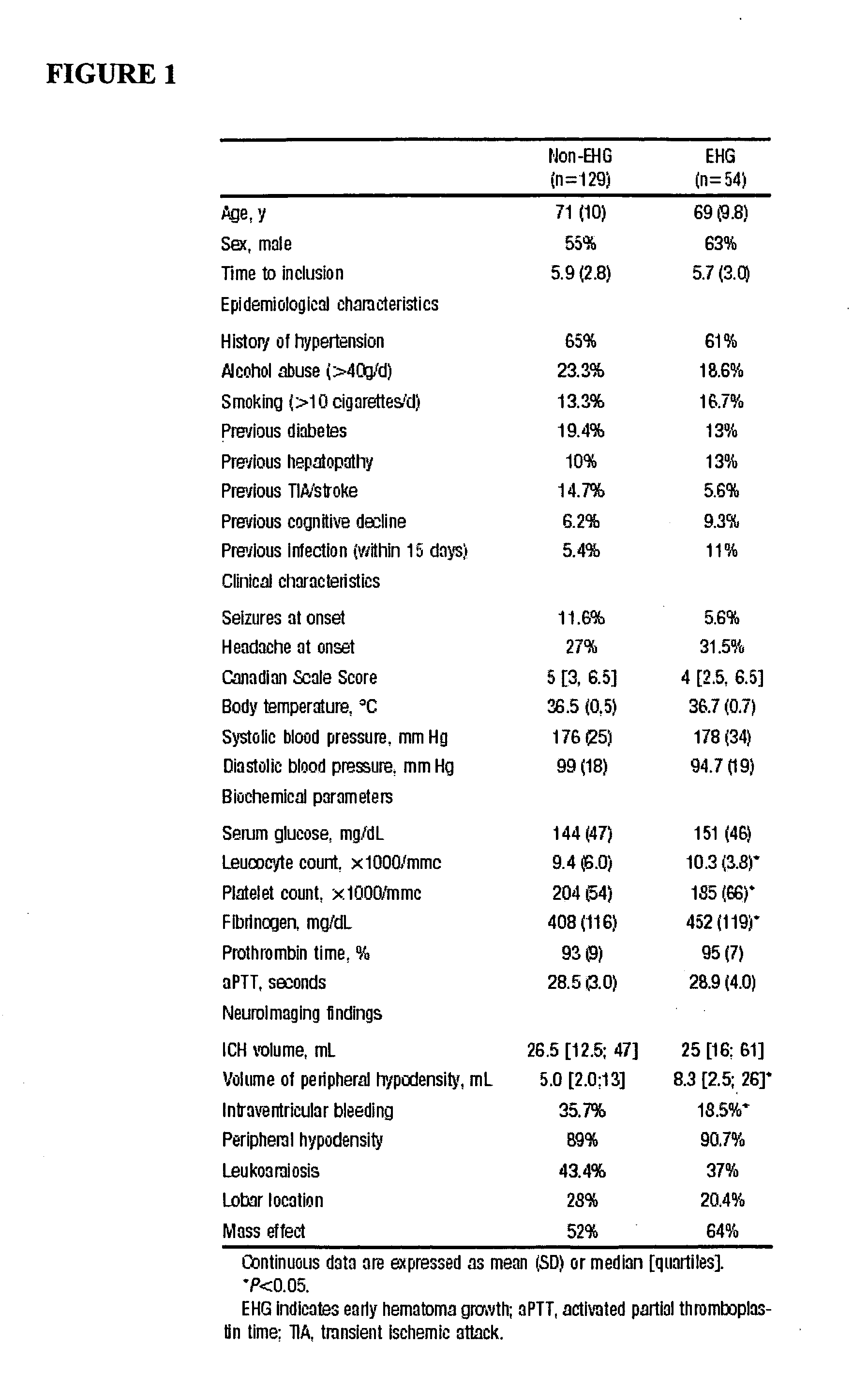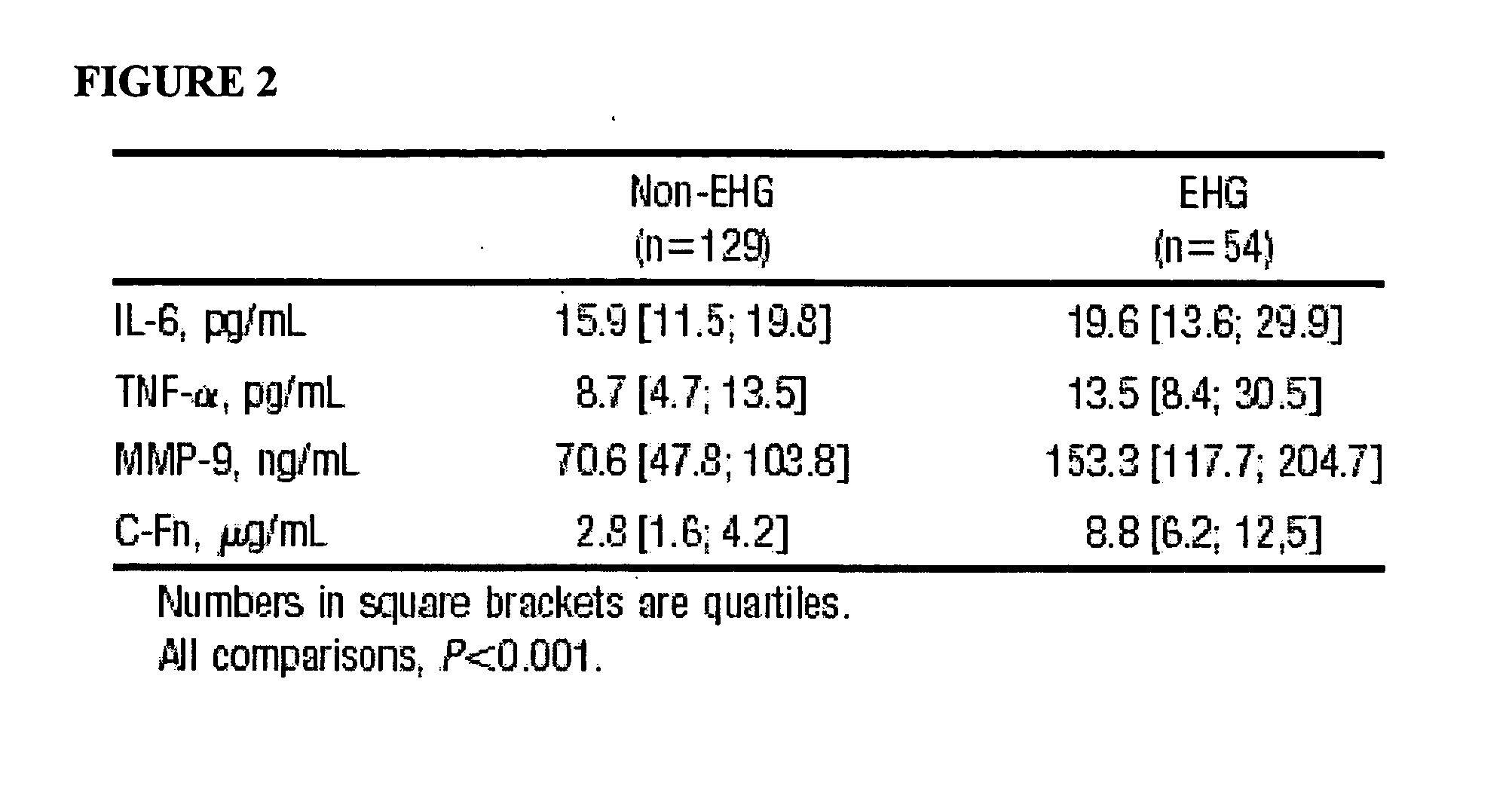Cellular fibronectin as a diagnostic marker in stroke and methods of use thereof
- Summary
- Abstract
- Description
- Claims
- Application Information
AI Technical Summary
Benefits of technology
Problems solved by technology
Method used
Image
Examples
example i
[0186] In a prospective, multicenter study performed to identify predictors of early neurological deterioration, 266 patients with primary hemispheric ICH were admitted within 12 hours from the onset of symptoms. Exclusion criteria were age younger than 18, surgical treatment on admission, coma with expected death within 48 hours, and hemorrhage secondary to brain tumor, trauma, drug abuse, coagulation disorders, anticoagulant therapy, or vascular malformation. For the purpose of this study we also excluded patients without stored frozen blood samples obtained on admission (n=74) and those in whom computed tomography (CT) scan was not available at 48 hours (n=4). From the total series of 266 patients, 183 patients were included in the study. Early ICH growth occurred in 54 patients (29.5%), in 15 (22.3%) of 67 patients with baseline ICH <20 mL, and in 39 (33.6%) of 116 patients with baseline ICH ≧20 mL. The frequency of EHG in the total series was similar (26.9%), and there were no ...
example ii
[0199] Subjects and Methods
[0200] Plasma glutamate, glycine, γ-aminobutyric acid (GABA), interleukin-6 (IL-6), IL-10, tumor necrosis factor-α (TNF-α), MMP-9 and c-Fn concentrations were determined in 75 patients <70 years of age experiencing a clinically massive MCA infarction <24 hours from stroke onset. Patients were consecutively included in a prospective register with the aim of evaluating serum markers of early and late clinical course. Of 408 acute ischemic stroke patients included during the 1-year study period, 75 patients experienced large / massive strokes (total anterior cerebral infarction [TACI]), met all eligibility criteria, and so were included retrospectively in the present study. Forty of these patients had fatal brain swelling and were designated as having m-MCA infarction. The remaining 35 patients with complete MCA infarction of comparable clinical severity to those of m-MCA infarction served as the control group. Massive MCA infarction was diagnosed in patients ...
PUM
 Login to View More
Login to View More Abstract
Description
Claims
Application Information
 Login to View More
Login to View More - R&D
- Intellectual Property
- Life Sciences
- Materials
- Tech Scout
- Unparalleled Data Quality
- Higher Quality Content
- 60% Fewer Hallucinations
Browse by: Latest US Patents, China's latest patents, Technical Efficacy Thesaurus, Application Domain, Technology Topic, Popular Technical Reports.
© 2025 PatSnap. All rights reserved.Legal|Privacy policy|Modern Slavery Act Transparency Statement|Sitemap|About US| Contact US: help@patsnap.com



